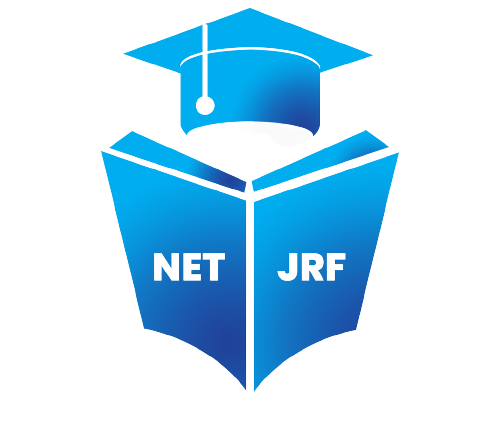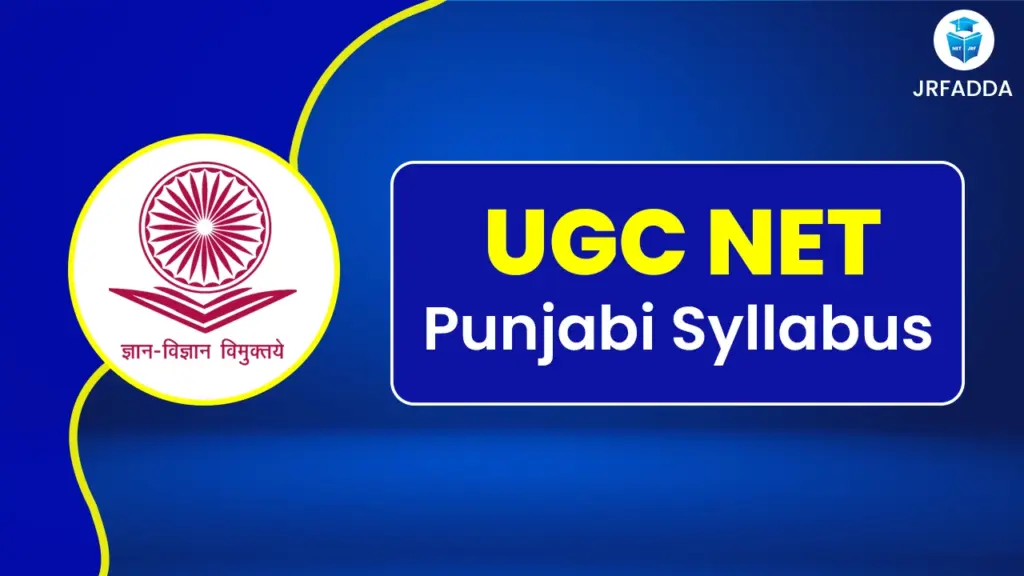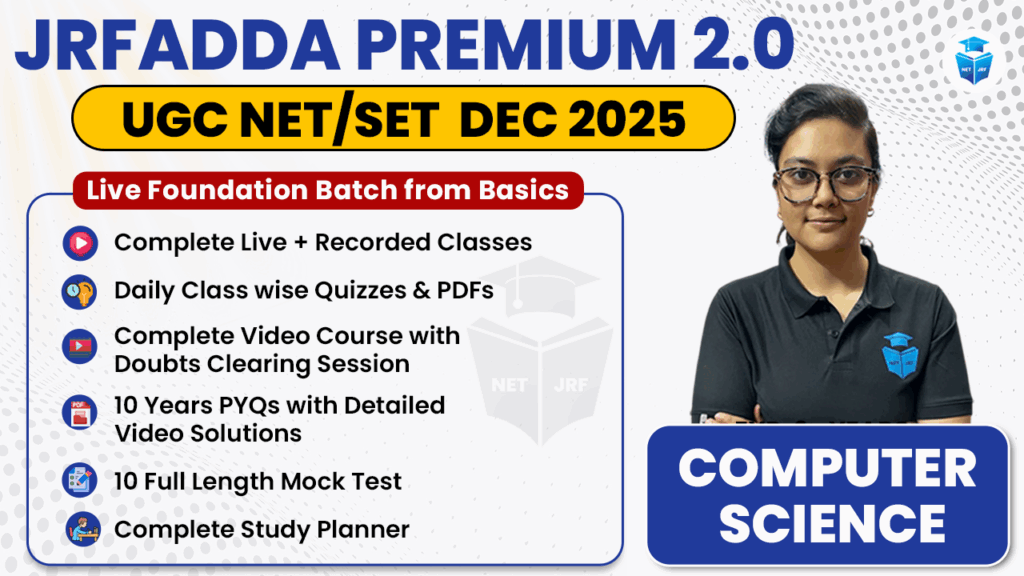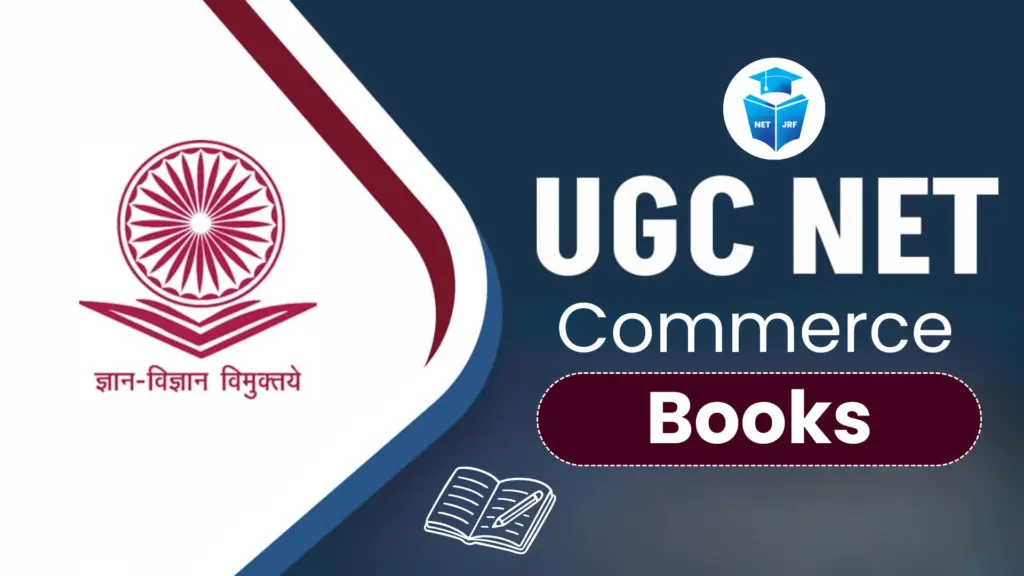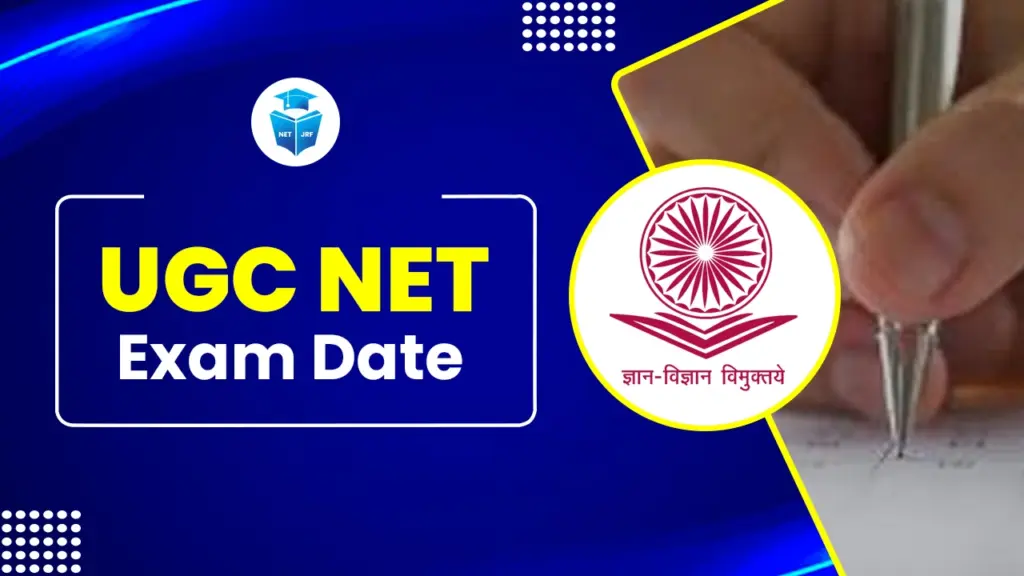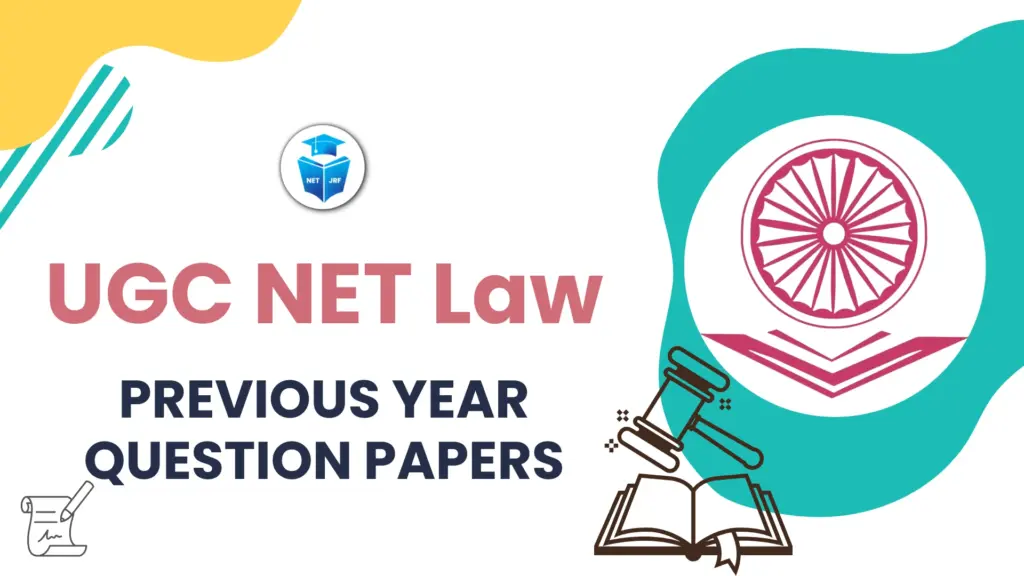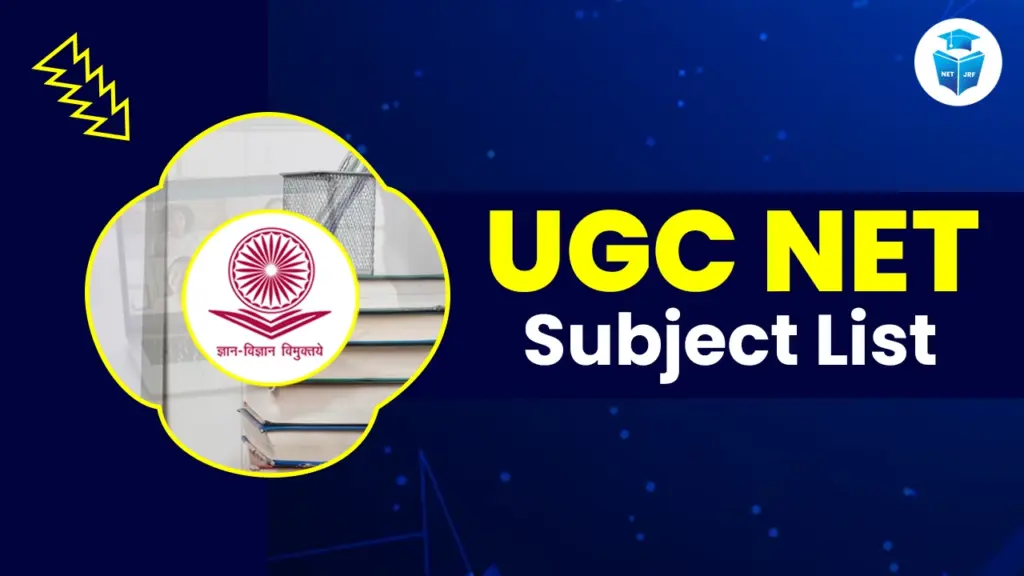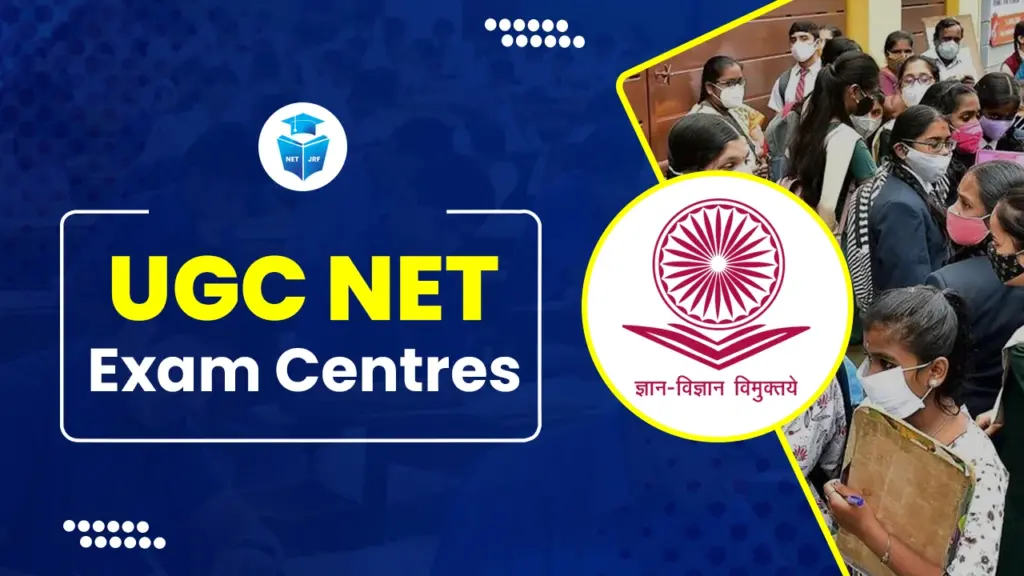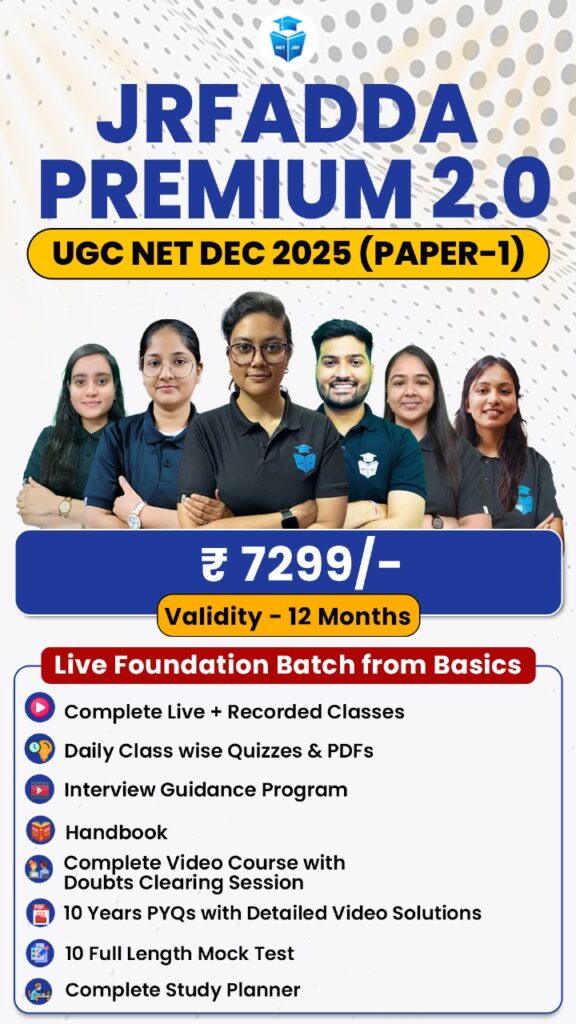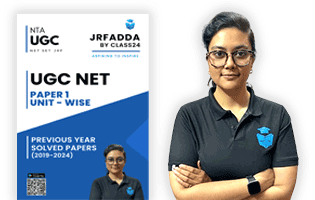The UGC NET Punjabi Syllabus 2025 outlines essential topics in classical and modern Punjabi literature, linguistics, grammar, literary theory, poetry, drama, folklore, and comparative literature. The National Testing Agency (NTA) has officially released the UGC NET Punjabi Syllabus 2025 on its website for Paper II (subject-specific). The subject code for Punjabi is 24. The syllabus is segmented into 10 major units, helping aspirants focus on both historical and contemporary developments in the Punjabi language and literature. Candidates preparing for Assistant Professor and Junior Research Fellowship (JRF) should refer to the updated and detailed unit-wise syllabus to structure their preparation effectively.
UGC NET Punjabi Syllabus 2025 Overview
| Feature | Details |
| Exam Name | UGC NET 2025 |
| Conducting Body | National Testing Agency (NTA) |
| Purpose | Eligibility for Assistant Professor & JRF |
| Exam Mode | Computer-Based Test (CBT) |
| Medium of Exam | Punjabi |
| Papers | Paper I (General), Paper II (Punjabi) |
| Subject Code | 24 |
| Total Duration | 3 Hours (180 Minutes) |
| Expected Exam Dates | 21 June to 30 June 2025 (Tentative) |
| Official Website | ugcnet.nta.nic.in |
Also Read: UGC NET June 2025
UGC NET Punjabi Syllabus 2025 PDF Download
For thorough preparation, candidates should download the official UGC NET Punjabi Syllabus 2025 PDF issued by the NTA. The syllabus outlines specific topics under each unit, facilitating focused and efficient study. Download the PDF using the link below and revise all important concepts in Punjabi literature and linguistics.
| UGC NET Punjabi Syllabus PDF Download |
UGC NET Syllabus Paper 1 Unit Wise
Paper 1 is a common paper across all subjects, testing research, teaching aptitude, and reasoning skills. Excelling in Paper 1 is crucial for improving overall UGC NET scores.
| Unit No. | Topic | Description |
| Unit 1 | Teaching Aptitude | Nature, objectives, characteristics of teaching; learner’s traits; teaching methods |
| Unit 2 | Research Aptitude | Research types, ethics, process, thesis writing, methodologies |
| Unit 3 | Comprehension | Reading comprehension with interpretative questions |
| Unit 4 | Communication | Communication types, barriers, classroom communication |
| Unit 5 | Mathematical Reasoning & Aptitude | Number series, percentages, profit & loss, ratio, averages, time-speed-distance, data interpretation |
| Unit 6 | Logical Reasoning | Analogies, syllogisms, inductive & deductive reasoning, Venn diagrams |
| Unit 7 | Data Interpretation | Graphs, charts, tables interpretation |
| Unit 8 | Information & Communication Technology (ICT) | Basics of ICT, e-learning tools, internet & digital initiatives |
| Unit 9 | People, Development & Environment | Sustainable development, environmental issues, pollution, conservation |
| Unit 10 | Higher Education System | Governance, policies, regulatory bodies, evolution of higher education |
Download UGC NET Paper I Syllabus 2025 PDF
| UGC NET Paper I Syllabus 2025 | |
| English | Hindi |
UGC NET Punjabi Syllabus Paper 2 Unit Wise
Paper 2 is subject-specific, emphasizing Punjabi language, grammar, literature (classical to modern), criticism, and linguistics. Below is a unit-wise overview:
| Unit | Title | Key Topics Covered |
| Unit I | Literature, Literary Forms & Historiography | Definitions, forms (medieval & modern), relationship of literature with other disciplines, Indian & Western literary theories, Punjabi literary thinkers, historiography concepts, differences between literary history and historiography, meta-study of Punjabi literary history texts. |
| Unit II | Punjabi Sufi & Gurmat Poetry | Origins, development & features of Sufi & Gurmat poetry, key poets (e.g., Baba Farid, Bulleh Shah, Guru Nanak Dev Ji), Sri Guru Granth Sahib, devotional poets (e.g., Kabir, Ravidas), Varan Bhai Gurdas, critical reception meta-studies. |
| Unit III | Punjabi Story Poetry & Bir Var Poetry | Kissa poetry (origin, features, key poets like Waris, Damodar), Bir Var & Jangnama poetry (e.g., Guru Gobind Singh), war chroniclers (e.g., Shah Muhammad), meta-study of criticism. |
| Unit IV | Punjabi Prose | Medieval prose (e.g., Janamsakhi tradition, Gur Bilas), modern prose (key trends & authors), contemporary trends, diaspora & Pakistani prose surveys, meta-studies of criticism. |
| Unit V | Modern Punjabi Poetry | Development and features, major trends (realist, feminist, Dalit, etc.), diaspora & Pakistani poetry surveys, notable poets (e.g., Pash, Shiv Kumar, Amrita Pritam), meta-study of criticism. |
| Unit VI | Modern Punjabi Fiction | Origin & trends in Punjabi novels (e.g., psychological, feminist), diaspora & Pakistani novel surveys, emerging themes in contemporary fiction. |
| Unit VII | Punjabi Drama & One-Act Plays (Ekangi) | Origin & development, key trends, diaspora & Pakistani drama, major playwrights (e.g., Balwant Gargi, Ajmer Aulakh), evolution of Punjabi theatre, meta-study of criticism. |
| Unit VIII | Folklore & Punjabi Culture | Definitions, elements of folklore, folk literature (songs, tales, beliefs), global folklorists (e.g., V. Propp), Punjabi customs, arts, dances, crafts, review history. |
| Unit IX | Language, Linguistics & Gurmukhi Script | Definitions, distinctions (language vs. dialect), communication media, language families, Indian Aryan languages, Saussure & Chomsky theories, phonetics, semantics, origin of Punjabi. |
| Unit X | Miscellaneous: Migration, Translation, Research | Migration & diaspora literature, multiculturalism, translation (types, issues, machine translation), Punjabi translation corpus, research methods, digital tools, Punjabi research traditions. |
ਯੂਜੀਸੀ ਨੈੱਟ ਪੰਜਾਬੀ ਸਿਲੇਬਸ – ਪੇਪਰ 2 (ਯੂਨਿਟ-ਵਾਈਜ਼ ਟੇਬਲ)
| ਯੂਨਿਟ | ਸਿਰਲੇਖ | ਮੁੱਖ ਵਿਸ਼ੇਸ਼ਤਾਵਾਂ |
| ਯੂਨਿਟ I | ਸਾਹਿਤ, ਸਾਹਿਤਕ ਰੂਪ ਤੇ ਇਤਿਹਾਸ ਲੇਖਨ | ਸਾਹਿਤ ਦੀ ਪਰਿਭਾਸ਼ਾ, ਰੂਪ (ਮੱਧਕਾਲੀ ਤੇ ਆਧੁਨਿਕ), ਸਾਹਿਤ ਅਤੇ ਹੋਰ ਵਿਧਿਆਵਾਂ (ਭਾਸ਼ਾ, ਸਮਾਜ, ਇਤਿਹਾਸ, ਆਦਿ) ਵਿਚਕਾਰ ਸੰਬੰਧ, ਭਾਰਤੀ ਅਤੇ ਪੱਛਮੀ ਸਾਹਿਤਕ ਵਿਧਾਨ, ਪੰਜਾਬੀ ਸਾਹਿਤਕ ਵਿਚਾਰਕ, ਇਤਿਹਾਸ ਲੇਖਨ ਦੀ ਸਮਝ, ਸਾਹਿਤਕ ਇਤਿਹਾਸ ਅਤੇ ਇਤਿਹਾਸ ਲੇਖਨ ਵਿਚਕਾਰ ਅੰਤਰ, ਪੰਜਾਬੀ ਸਾਹਿਤ ਇਤਿਹਾਸਾਂ ਦੀ ਮੈਟਾ-ਅਧਿਐਨ। |
| ਯੂਨਿਟ II | ਪੰਜਾਬੀ ਸੁਫੀ ਅਤੇ ਗੁਰਮਤਿ ਕਾਵਿ | ਸੁਫੀ ਕਾਵਿ ਦੀ ਸ਼ੁਰੂਆਤ, ਵਿਕਾਸ, ਵਿਸ਼ੇਸ਼ਤਾਵਾਂ; ਮੁਖ ਸੁਫੀ ਕਵੀ (ਬਾਬਾ ਫਰੀਦ, ਬੁੱਲ੍ਹੇ ਸ਼ਾਹ ਆਦਿ), ਗੁਰਮਤਿ ਕਾਵਿ ਦੇ ਦਿਸ਼ਾ ਤੇ ਪੜਾਅ, ਸ੍ਰੀ ਗੁਰੂ ਗ੍ਰੰਥ ਸਾਹਿਬ ਦੇ ਸਾਹਿਤਕ ਗੁਣ, ਗੁਰੂ ਸਾਹਿਬਾਨ ਅਤੇ ਭਗਤ ਕਵੀ, ਵਾਰਾਂ ਭਾਈ ਗੁਰਦਾਸ, ਆਲੋਚਨਾ ਦੀ ਮੈਟਾ-ਸਟੱਡੀ। |
| ਯੂਨਿਟ III | ਕਿੱਥਾ ਕਾਵਿ ਤੇ ਬੀਰ ਰਸ ਕਾਵਿ | ਪੰਜਾਬੀ ਕਿੱਥਾ ਕਾਵਿ ਦੀ ਸ਼ੁਰੂਆਤ, ਵਿਸ਼ੇਸ਼ਤਾਵਾਂ, ਮੁਖ ਕਵੀ (ਦਮੋਦਰ, ਹਸ਼ਮ ਆਦਿ), ਬੀਰ ਰਸ ਕਾਵਿ ਅਤੇ ਜੰਗਨਾਮਾ ਕਾਵਿ ਦੀਆਂ ਧਾਰਾਵਾਂ, ਗੁਰੂ ਗੋਬਿੰਦ ਸਿੰਘ, ਪੀਰ ਮੁਹੰਮਦ ਆਦਿ, ਆਲੋਚਨਾ ਦੀ ਮੈਟਾ-ਸਟੱਡੀ। |
| ਯੂਨਿਟ IV | ਪੰਜਾਬੀ ਗੱਥਾ | ਮੱਧਕਾਲੀ ਗੱਥਾ (ਜਨਮਸਾਖੀ, ਗੋਸ਼ਟੀਆਂ, ਟਿੱਪਣੀਆਂ), ਆਧੁਨਿਕ ਗੱਥਾ (ਵਿਕਾਸ, ਵਿਸ਼ੇਸ਼ਤਾਵਾਂ), ਨਵੇਂ ਰੁਝਾਨ, ਵਿਦੇਸ਼ੀ ਤੇ ਪਾਕਿਸਤਾਨੀ ਪੰਜਾਬੀ ਗੱਥਾ ਦਾ ਸਰਵੇਖਣ, ਆਲੋਚਨਾ ਦਾ ਅਧਿਐਨ। |
| ਯੂਨਿਟ V | ਆਧੁਨਿਕ ਪੰਜਾਬੀ ਕਾਵਿ | ਆਗਮਨ, ਵਿਕਾਸ ਅਤੇ ਵਿਸ਼ੇਸ਼ਤਾਵਾਂ, ਆਦਰਸ਼ਵਾਦੀ, ਪ੍ਰਗਟਿਵਾਦੀ, ਨਾਰੀਵਾਦੀ, ਦਲਿਤ ਨਜ਼ਰੀਏ ਆਧਾਰਿਤ ਰੁਝਾਨ, ਨਵੇਂ ਰੁਝਾਨ, ਪ੍ਰਵਾਸੀ ਤੇ ਪਾਕਿਸਤਾਨੀ ਕਾਵਿ, ਵਿਖਿਆਤ ਕਵੀ (ਪਸ਼, ਅੰਮ੍ਰਿਤਾ ਪ੍ਰੀਤਮ, ਹਰਭਜਨ ਸਿੰਘ ਆਦਿ), ਆਲੋਚਨਾ ਦਾ ਅਧਿਐਨ। |
| ਯੂਨਿਟ VI | ਆਧੁਨਿਕ ਪੰਜਾਬੀ ਕਾਦੰਸੀ | ਪੰਜਾਬੀ ਨਾਵਲ ਦਾ ਆਗਾਜ਼, ਵਿਕਾਸ ਤੇ ਵਿਸ਼ੇਸ਼ਤਾਵਾਂ, ਆਦਰਸ਼ਵਾਦ, ਇਤਿਹਾਸਕ, ਮਨੋਵਿਗਿਆਨਕ, ਨਾਰੀਵਾਦੀ, ਦਲਿਤ ਨਜ਼ਰੀਏ, ਨਵੇਂ ਰੁਝਾਨ, ਪ੍ਰਵਾਸੀ ਤੇ ਪਾਕਿਸਤਾਨੀ ਨਾਵਲਾਂ ਦਾ ਸਰਵੇਖਣ। |
| ਯੂਨਿਟ VII | ਪੰਜਾਬੀ ਨਾਟਕ ਤੇ ਏਕਾਂਗੀ | ਨਾਟਕ ਤੇ ਏਕਾਂਗੀ ਦੀ ਸ਼ੁਰੂਆਤ, ਵਿਕਾਸ ਅਤੇ ਵਿਸ਼ੇਸ਼ਤਾਵਾਂ, ਆਧੁਨਿਕ ਰੁਝਾਨ, ਵਿਦੇਸ਼ੀ ਤੇ ਪਾਕਿਸਤਾਨੀ ਨਾਟਕ, ਪ੍ਰਮੁੱਖ ਨਾਟਕਾਰ (ਬਲਵੰਤ ਗਰਗੀ, ਚਰਨਦਾਸ ਸਿਧੂ ਆਦਿ), ਪੰਜਾਬੀ ਰੰਗਮੰਚ ਦਾ ਵਿਕਾਸ, ਆਲੋਚਨਾ ਦਾ ਅਧਿਐਨ। |
| ਯੂਨਿਟ VIII | ਲੋਕਧਾਰਾ, ਪੰਜਾਬੀ ਲੋਕ ਸਾਹਿਤ ਤੇ ਸਭਿਆਚਾਰ | ਲੋਕਧਾਰਾ ਦੀ ਪਰਿਭਾਸ਼ਾ, ਤੱਤ, ਰੂਪ; ਲੋਕ ਸਾਹਿਤ ਦੇ ਰੂਪ (ਗੀਤ, ਕਹਾਣੀਆਂ, ਰਸਮਾਂ, ਨਾਟਕ, ਧਰਮ, ਨ੍ਰਿਤ, ਆਰਟਸ), ਪ੍ਰਸਿੱਧ ਲੋਕਧਾਰਾ ਵਿਦਵਾਨ (V. Propp ਆਦਿ), ਪੰਜਾਬੀ ਲੋਕ ਰਿਵਾਜ, ਪਹਿਰਾਵਾ, ਗੀਤ, ਨ੍ਰਿਤ, ਖੇਡਾਂ, ਇਕੱਠ ਅਤੇ ਸੰਪਾਦਨ ਇਤਿਹਾਸ। |
| ਯੂਨਿਟ IX | ਭਾਸ਼ਾ, ਭਾਸ਼ਾ ਵਿਗਿਆਨ ਅਤੇ ਗੁਰਮੁਖੀ ਲਿਪੀ | ਭਾਸ਼ਾ ਦੀ ਪਰਿਭਾਸ਼ਾ, ਰੂਪ, ਭੂਮਿਕਾ; ਭਾਸ਼ਾ, ਬੋਲੀ ਅਤੇ ਲਿਪੀ ਵਿਚਕਾਰ ਅੰਤਰ; ਸੰਚਾਰ ਮਾਧਿਅਮ (ਮੀਡੀਆ), ਭਾਸ਼ਾ ਪਰਿਵਾਰ, ਭਾਰਤ ਦੀ ਆਧੁਨਿਕ ਆਰਿਆ ਭਾਸ਼ਾਵਾਂ; ਸੌਸੀਅਰ ਅਤੇ ਚੌਮਸਕੀ ਦੇ ਸਿਧਾਂਤ, ਧੁਨਿਵਿਗਿਆਨ, ਅਰਥਵਿਗਿਆਨ, ਵਾਕ ਵਿਗਿਆਨ, ਪੰਜਾਬੀ ਭਾਸ਼ਾ ਦੀ ਉਤਪੱਤੀ ਅਤੇ ਲਕੜੀ। |
| ਯੂਨਿਟ X | ਵਿਵਿਧ (ਪ੍ਰਵਾਸ, ਅਨੁਵਾਦ ਅਤੇ ਖੋਜ) | ਪ੍ਰਵਾਸ ਦੀ ਪਰਿਭਾਸ਼ਾ, ਡਾਇਸਪੋਰਾ ਸਾਹਿਤ, ਬਹੁ-ਸੰਸਕ੍ਰਿਤਕਤਾ, ਪ੍ਰਵਾਸੀ ਚੇਤਨਾ, ਪੰਜਾਬੀ ਪ੍ਰਵਾਸ ਇਤਿਹਾਸ, ਅਨੁਵਾਦ ਵਿਗਿਆਨ (ਮਸ਼ੀਨੀ ਅਨੁਵਾਦ, ਸਮੱਸਿਆਵਾਂ, ਪ੍ਰਕਾਰ), ਪੰਜਾਬੀ ਵਿਚ ਅਨੁਵਾਦਿਤ ਸਾਹਿਤ, ਖੋਜ ਪੱਧਤੀਆਂ, ਡਿਜ਼ੀਟਲ ਲਾਇਬ੍ਰੇਰੀ ਅਤੇ ਆਧੁਨਿਕ ਖੋਜ ਦੀਆਂ ਸੰਭਾਵਨਾਵਾਂ। |
UGC NET Punjabi Exam Pattern 2025
The UGC NET Punjabi examination comprises two papers conducted in a single online session. Both papers are objective in nature and assess the candidate’s general aptitude and subject-specific knowledge.
| Papers | Number of Questions | Marks | Question Type | Duration |
| Paper 1 | 50 | 100 | General Aptitude (MCQs) | 3 Hours |
| Paper 2 | 100 | 200 | Punjabi Subject (MCQs) | 3 Hours |
Also Read: UGC NET Exam Pattern 2025
Tips to Crack UGC NET Punjabi Exam 2025
- Start Early: Begin preparation alongside your postgraduation studies to build strong conceptual clarity.
- Follow UGC & University Syllabus: Refer to Punjabi syllabi of top universities for holistic preparation.
- Make a Study Timetable: Allocate time for grammar, literature, practice papers, and revision.
- Practice Previous Papers: Identify repeated themes and commonly asked author-based questions.
- Take Mock Tests: Practice online mock tests regularly to improve accuracy and time management.
- Revise Literary Terms & Criticism: Focus on theoretical understanding of Punjabi poetics and literary history.
- Read Classic Texts: Study original works of key writers and poets in both classical and modern periods.
- Stay Consistent & Positive: Stick to your schedule and maintain a positive mindset.
Conclusion
The UGC NET Punjabi Syllabus 2025 is designed to evaluate a candidate’s in-depth understanding of Punjabi language, literature, and its evolution. With focused preparation, the right resources, and regular practice, candidates can confidently approach the exam and aim for success as a JRF or Assistant Professor. Be sure to follow the official syllabus, use standard textbooks, and prepare strategically.
UGC NET Punjabi Syllabus 2025 FAQs
What are the major topics in the UGC NET Punjabi Paper 2 syllabus?
The syllabus includes Punjabi grammar, classical and modern literature, folk literature, literary criticism, linguistics, and major writers.
Does the Punjabi syllabus change each year?
The core syllabus remains consistent, but NTA may revise certain sections. Always refer to the latest official syllabus.
How many questions are there in Punjabi Paper 2?
There are 100 objective-type questions in Paper 2, each carrying 2 marks, based on the Punjabi subject.
Is Punjabi folk literature included in the syllabus?
Yes, Punjabi folk songs, tales, and oral traditions form an important part of the Paper 2 syllabus.
What is the best preparation strategy for Punjabi literature?
Focus on studying original Punjabi literary works, understanding criticism and theory, and practicing from PYQs and sample tests.
